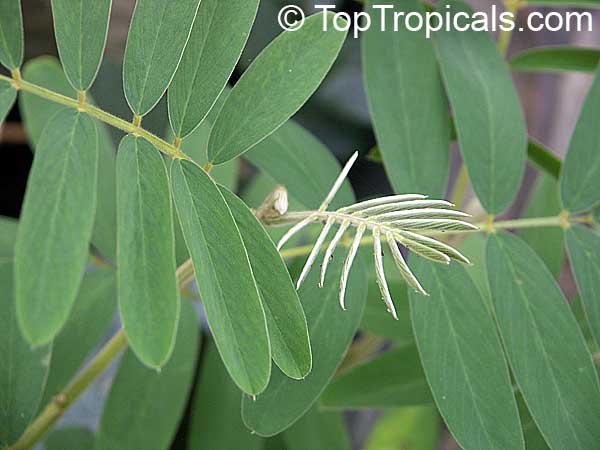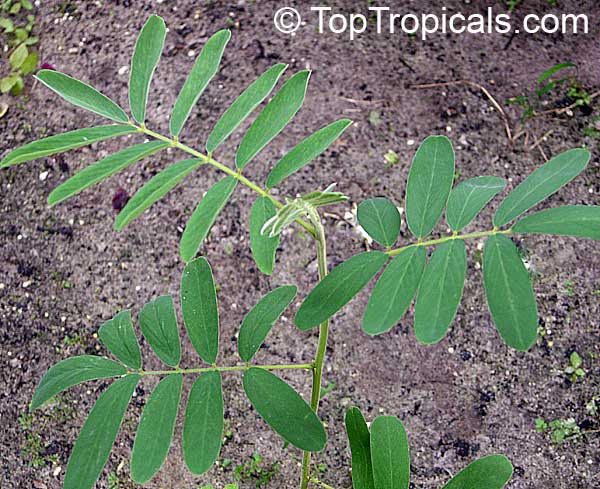Tephrosia vogelii (Muluku)
Top Tropicals Plant Encyclopedia
Botanical names: Tephrosia vogelii, Tephrosia vogellii
Common name: Muluku
Family: Fabaceae
Subfamily: Faboideae
Origin: Africa







Tephrosia is a perennial leguminous shrub indigenous to Uganda; in Lusoga and Luganda, it is known as muluku. It slow-growing, herbaceous, with soft, hairy-velvet leaves, pleasant to touch. Young leaves are silvery. The flower is about an inch across, and purple with white markings or white. The flowers are borne on compact racemes that bloom over a 3-6 week period. The plant is considered to be self-pollinated. The plant tolerates poor soils and harsh sites, attracts bees and butterflies.
Tephrosia is capable of fixing nitrogen from the air for improvement of soil fertility. The shrubs may be periodically pruned, applying immature plant parts to improve the soil. Leaves and roots of Tephrosia contain rotenone, a compound that is toxic to the root rats as well as fish and some insects. One new promising technology to control root rats is to plant Tephrosia as scattered plants in a field or as a barrier around fields. Tephrosia leaves can be used in insect control. Scientists at Kawanda have found the dried and powdered leaves of Tephrosia to be effective in the control of storage pests; in southern Tanzania, crushed fresh leaves are used in control of maize stalk borer. Tephrosia is also known as 'fish bean'; it is often used to paralyze fish, causing them to float to the surface.

